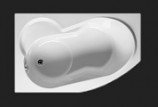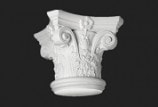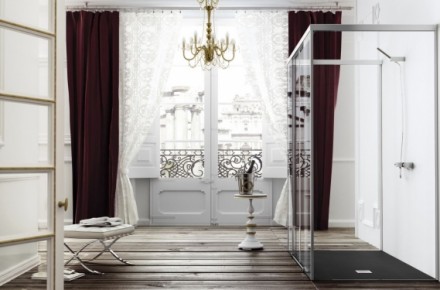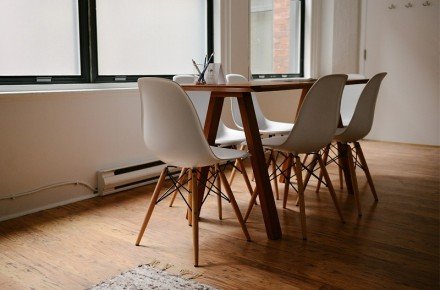Marmo concrete is a lime plaster, the use of which allows for the effect ofa medium grain concrete. Full functionality and appearance are provided only when this product is used as part of a system solution, but it is the plaster that is responsible for the obtained aesthetic results. Marmo Concrete is a fully natural mineral mixture, which application gives rise to the surface that has the illusion-like appearance of medium concrete.
Natural plaster providing the possibility of natural breathing for the walls at the same time protects it against the formation of mold outbreaks and giving it maximum strength is one of the most urgently sought decorative materials. The final result in terms of appearance depends on its application, the amount of material used, humidity and above all coloring – lime plasters, including Concrete Marmo, can be dyed to any color, which proves belies of the claim that concrete interiors have to be grey.
Concrete Marmo plaster application is not limited to the artistic decoration. This plaster can also be used outdoors, as well as the cosmetic filling of precasts or concrete facades during the maintenance works. The visual effect of the average grain size is similar to the average grain concrete – with the size of grains, expanses generated between them are decreasing what is visible in the aesthetic effect. Properly located and secured plaster is one of the most durable of all possible surface finishes for walls or ceilings, but keep in mind that it is a professional team that should deal with the its application.
WHY CONCRETE
Concrete Marmo is a very distinctive lime plaster. It is a completely natural product, so there may appear slight differences between the production batches due to eg. minor changes of the proportions of minerals, but some of the advantages of this plaster remain constant and unchanging.
– Concrete Marmo retains excellent permeability to water vapor. The moisture will be able to diffuse through the wall and will not accumulate in the room, which might lead to deterioration in the microclimate or outbreaks of the mold (which will also not appear due to the alkalinity of the plaster).
– Lime plaster Concrete Marmo is distinguished by excellent adhesion to different types of substrates. After proper priming its distribution is very simple, and the stability of the resulting layer is beyond doubt.
– Another important advantage of this plaster is enormous resistance to abrasion. Also in terms of impact resistance and the resulting mechanical damages Marmo Concrete should be evaluated very highly. This is important because due to this parameters the decorative layer is very durable.
APPLICATION OF THE CONCRETE MARMO
Marmo is a concrete plaster that works wherever there is at least periodically heavy traffic or a serious risk of contamination and damage to the surface of the walls. This means that this type of decorative effects can be found more often in hotels, restaurants, private homes, as well as in manufacturing companies, garages, boiler rooms and laundries.
Concrete Marmo is also an element of finishes, which is increasingly appearing in new projects of arrangements inspired by brutality or industrialism – in this case, however, as important as its usability, are its aesthetic values.
HOW TO APPLY MARMO CONCRETE
– The wall must be cleaned and degreased. On a clean and dry surface, apply the basic primer. In this case, the main task is to reduce the absorption of the substrate.
– Quartz base is applied on the primed surface. This preparation is responsible for the additional increase in adhesion of later applied plaster, and for even clearer limiting of absorption of the substrate.
– Apply a layer of primer on the prepared substrate,. In the case of Concrete Marmo it can be either Calce Marmorino backing, or Concrete Micro. In both cases, you must create an even flat layer of primer, wrung from the excess on the thickness of the grain.
– After drying of the substrate, Concrete Marmo plaster is applied to the thickness of the grain. You have to remember that doing the work in stages, ensure that that individual elements completed in a different order were always wet when connected. Applied compound can be enhanced by the effects of expansion joints and then finally smoothed.
– Ready plaster should be impregnated with one or two layers of transparent paint diluted with water, making it resistant to external factors and strengthen the structure.















































